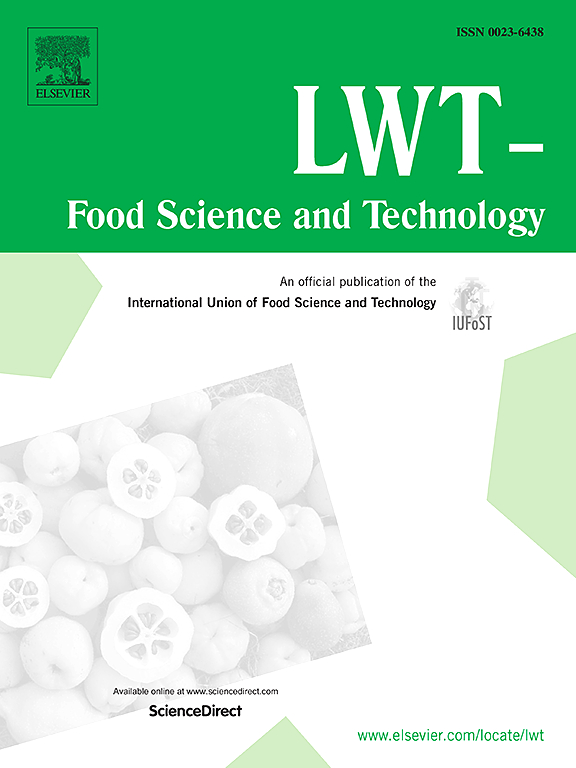Investigating the impact of particle size on the volatile and non-volatile metabolite variations of ginger powder
IF 6
1区 农林科学
Q1 FOOD SCIENCE & TECHNOLOGY
引用次数: 0
Abstract
Particle size is a key morphological feature of ginger powder. It is known to influence the physicochemical properties of the product. Our previous research showed that particle size affects the spectral properties of ginger powder. That research raises an unanswered question, whether particle size variations may induce compositional changes, subsequently resulting in spectral variations. The impact of particle size on ginger powder's composition, particularly at the metabolomics level, remains unexplored. This study sought to explore the influence of particle size on the compositional variations, specifically metabolites, of ginger powder. Volatile and non-volatile metabolite analyses were performed using headspace solid-phase microextraction coupled with gas chromatography-mass spectrometry and liquid chromatography coupled with quadrupole time-of-flight mass spectrometry. The results revealed that particle size is not a decisive factor in the metabolite variations of ginger powder. The differential compounds identified using chemometrics revealed that geographical origin and processing methods, specifically drying, might have a more pronounced effect on the metabolite variations. Ultimately, this study filled the knowledge gap regarding the impact of particle size on ginger powder's metabolomics profiles, providing insights into the potential sources of variations leading to a better understanding of the compositional variation linked to powdered spice products and their production. These insights contribute to optimizing powdered spice production and enhance metabolomics-based food authentication.
研究粒径对姜粉挥发性和非挥发性代谢物变化的影响
粒径是姜粉的主要形态特征。已知它会影响产品的物理化学性质。我们前期的研究表明,粒径对姜粉的光谱特性有影响。这项研究提出了一个悬而未决的问题,即颗粒大小的变化是否会引起成分的变化,从而导致光谱的变化。颗粒大小对姜粉成分的影响,特别是在代谢组学水平上的影响,仍未被探索。本研究旨在探讨粒径对姜粉成分变化,特别是代谢物的影响。挥发性和非挥发性代谢物分析采用顶空固相微萃取和气相色谱-质谱联用,液相色谱联用四极杆飞行时间质谱联用。结果表明,粒径不是影响姜粉代谢产物变化的决定性因素。化学计量学鉴定的差异化合物表明,地理来源和加工方法,特别是干燥,可能对代谢物的变化有更明显的影响。最终,本研究填补了关于粒径对姜粉代谢组学特征影响的知识空白,提供了对变化的潜在来源的见解,从而更好地了解与粉末香料产品及其生产相关的成分变化。这些见解有助于优化粉末香料生产和加强基于代谢组学的食品认证。
本文章由计算机程序翻译,如有差异,请以英文原文为准。
求助全文
约1分钟内获得全文
求助全文
来源期刊

LWT - Food Science and Technology
工程技术-食品科技
CiteScore
11.80
自引率
6.70%
发文量
1724
审稿时长
65 days
期刊介绍:
LWT - Food Science and Technology is an international journal that publishes innovative papers in the fields of food chemistry, biochemistry, microbiology, technology and nutrition. The work described should be innovative either in the approach or in the methods used. The significance of the results either for the science community or for the food industry must also be specified. Contributions written in English are welcomed in the form of review articles, short reviews, research papers, and research notes. Papers featuring animal trials and cell cultures are outside the scope of the journal and will not be considered for publication.
 求助内容:
求助内容: 应助结果提醒方式:
应助结果提醒方式:


